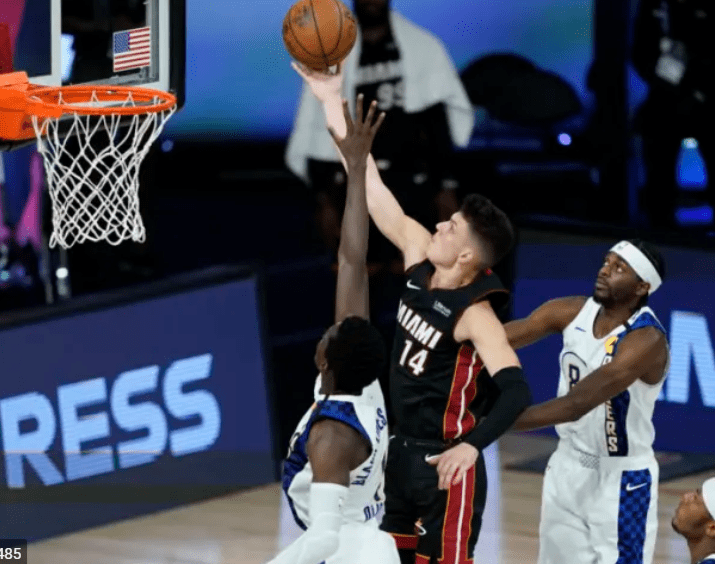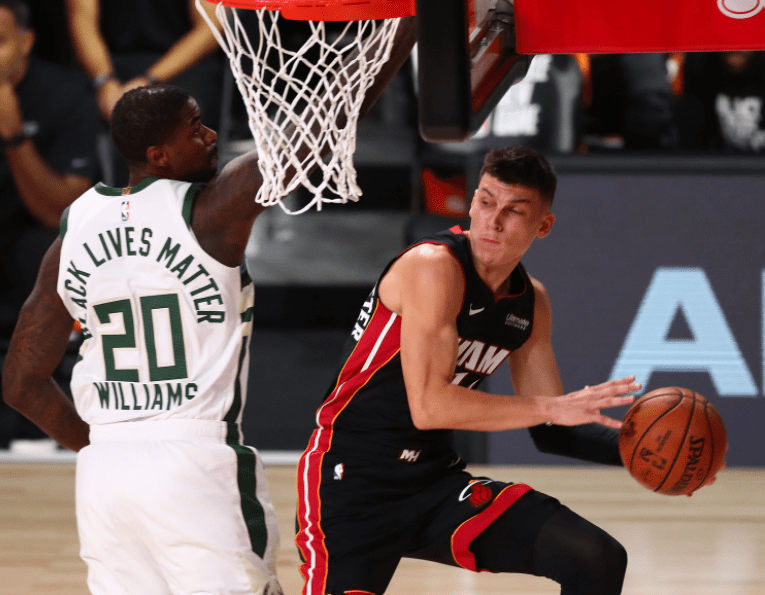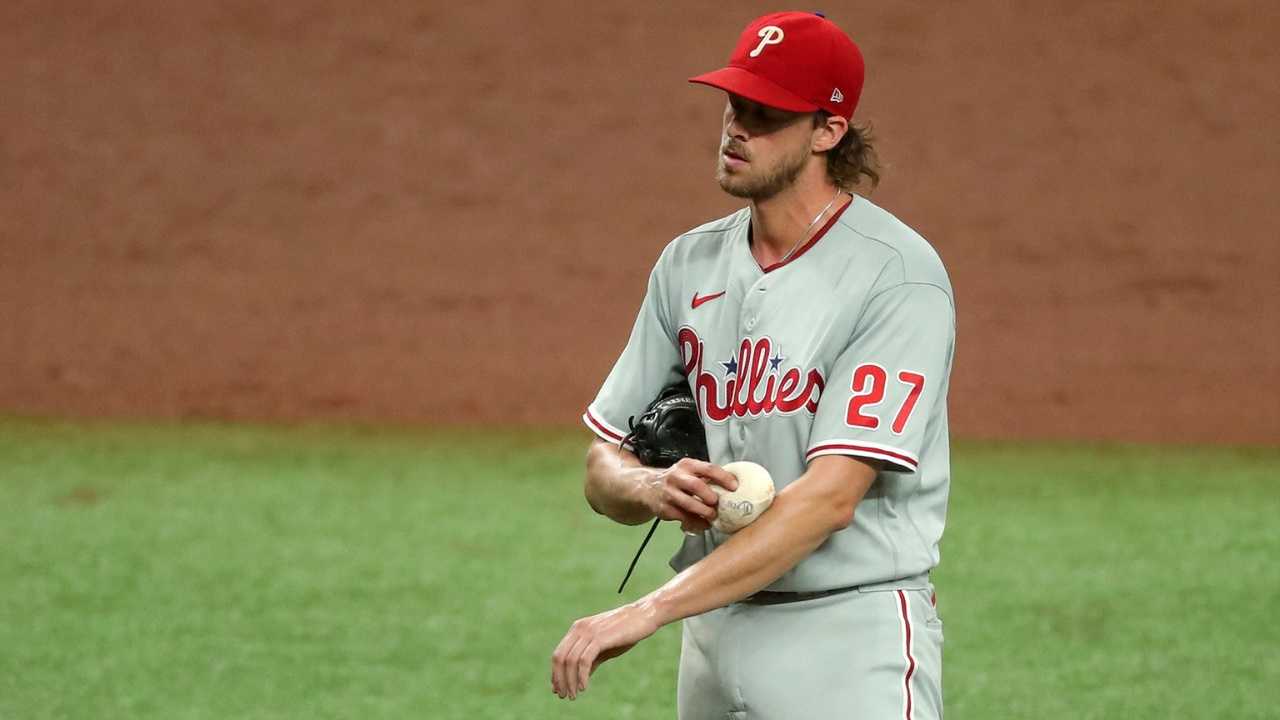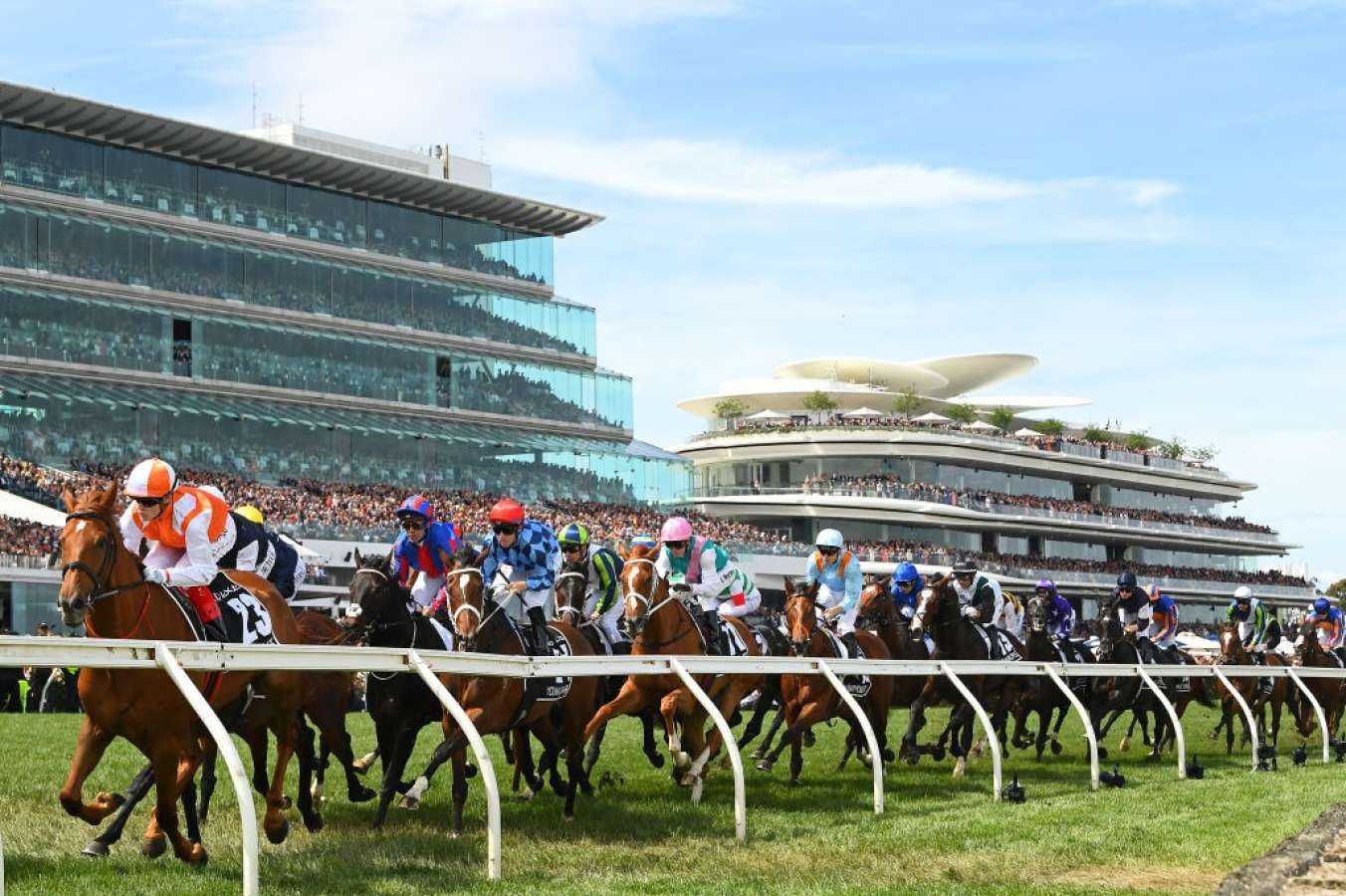As the Heat head to the NBA Finals, there are a ton of story lines for sportswriters and fans to run with. It’s the first chance for Pat Reilly and Erik Spoelstra to win a championship since LeBron James left in 2014. LeBron James vs. the club he won his first title with. It’s Anthony Davis, a 27-year-old All-Star Kentucky Wildcat big man, vs Bam Adebayo, a 23-year-old All-Star Kentucky Wildcat big man. It’s Andre Iguodala, who got a Finals MVP for “holding” LeBron to 35.3 points, 13.3 rebounds, and 8.8 assists per game vs. LeBron James. And of course, it gives us Alex Caruso vs. Tyler Herro.
For a reason we can’t qwhite put our finger on, some of the “fan favorite” players aren’t always the best players in the league. For some reason, these players tend to get lumped together and each fan base tends to have their own favorite. Franchises fawn after these types of fan favorites for jersey sales, advertising, or some other interaction with the community. Rarely, however, do those jersey sellers end up simultaneously being young contributors on NBA Finals teams. Until LA and Miami made the NBA Finals.
Now, the Bald Mamba and Herro Ball are going to be tied together as the two young guys poised to make a difference off the bench this series. Their games are similar enough for comparison, even if Caruso is 26 and Herro is 20. Alex Caruso and Tyler Herro attended Texas A&M and Kentucky, respectively, and are thus two SEC alums. Both are 6’5” combo guards and, well… that seems to be about where the resemblance stops as far as we can tell.
Let’s break down, quickly, how the two are different.. And maybe we can understand, why they tend to get lumped together.
Better Three Point Shooter: Tyler Herro

Tyler Herro wins this category in a far more dominating fashion than the average Laker fan may lead you to believe. Herro wins in both percentage (38.9% to 33.3% this year) and volume (5.4 attempts to 1.9 attempts). Herro is getting nearly ten more minutes a game, but the statistical difference only widens when put under the “per 36-minutes” or “per 100 possessions” microscope. On the whole, Tyler Herro is a more consistently strong three-point shooter.
And in these playoffs? Herro is shooting the same percentage on nearly eight three point attempts a game. Caruso’s percentage has dropped down to 24.4% as his attempts have risen to three a game. Even in the bubble, Herro has been the better player from behind the arc.
Two-Point Baskets: Tyler Herro

Herro wins this category by a much more narrow margin. For the average viewer, it feels like Caruso has a high-flying dunk highlight in nearly every Laker win and, for whatever reason, it seems to surprise everyone when it happens. While dunks do increase his field goal percentage, Herro still ties Caruso on two-point percentages at 46%.
Where Herro really pulls away with this one is in the volume. Herro was asked to account for over six attempts per game this year, and Caruso? He averaged just two two-point field goals a night. In the playoffs, Caruso has seen his percentage rise to 63% on the same amount of attempts, while Herro has seen a rise to 54% while increasing his attempts. Both are making more shots, but only one is making more and taking more shots. This category needs to reward carrying a heavier load, this one sticks with Herro.
Defense: Neither.

Look, we went through and broke down the analytics. Neither one of these guys has a statistical case to be good at defense, much less “better” than anyone else.
That said, both players have had a playoff moment that made it appear that they could cover someone. Alex Caruso gave the Houston Rockets’ Austin Rivers fits. Rivers was out of his element, was the only guard off the Rockets bench after the House incident, and Caruso rendered him ineffective.
Tyler Herro spent the closing, clutch moments of Games 1 and 2 of the Eastern Conference Finals, both, covering NBA All-Star Kemba Walker. Walker managed to hit some tough fade-away jumpers on Herro’s stout defense, but the Heat won both games anyways.
Passing:Tyler Herro

Ok, so admittedly this is also hard to statistically account for. The simplest way to gauge a players passing, with statistics, is in assists. Tyler Herro led Alex Caruso in assists during the regular season and has nearly doubled Alex Caruso’s assists per game in the playoffs.
That may seem to seal the deal, but assists aren’t the only way to assess passing.. Even if they’re statistical and thus unbiased. But if you watch this, even the most unbiased observer would admit this is a sweet pass from the second round of the NBA Playoffs.
Swag: Tyler Herro

Literally just need a single picture here. The confidence in Herro at 20-years-old is remarkable. Why anyone would think they had more swagger seems insane.
After breaking down the two, I’m not qwhite sure what the comparison even stems from. Seems like, while both Alex Caruso and Tyler Herro serve similar purposes on their respective teams… They aren’t actually comparable in their talent. Sure Caruso plays in LA with LeBron James and Anthony Davis, but what makes him stick out? How does that make him a better player? Or even a comparable one?
Listen, this is not a prediction piece. Tyler Herro being a better version of Alex Caruso, and six-years younger, and having absolutely nothing in common besides that they’re both SEC alums, does not mean the Miami Heat have some edge over the LA Lakers. But it feels undeniable that Herro pulls away as the better player. The deeper the numbers go, the more advantage goes to Herro.
Individually, they’re nearly incomparable in their respective basketball games, so why do NBA fans continue to compare them? Herro is better at each aspect of the game offensively, Herro is younger, Herro has hair… What is the thing that forces this comparison?
If so, please respond in the comments… We’re really stumped around here as to why these two guys are compared so often.
Follow me on Twitter @painsworth512 for more, and give our podcast “F” In Sports a listen wherever you listen to podcasts!







